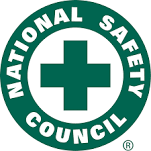Difference Between First Party & Third-Party Insurance? | FIRST, VERIFY
The importance of insurance in the construction industry cannot be ignored. The end product may be the construction of a new building, restoration of a current structure, or working on a smaller part of a much larger project. At any given time during a project, there is the potential for something to go wrong. When it does, that’s where insurance comes into play.
In most cases, when you look at insurance, there are numerous types of policies and coverages available. But generally, we can categorize them two ways – first-party and third-party insurance.
As is frequently the case with insurance, knowing exactly what the difference is between the two and how they affect you is half the battle.
First-party insurance is a type of coverage where you, the first-party, claim against your policy. This means you are paying for your coverage, and when an accident occurs you ask your insurer to pay you based on the terms of your insurance policy.
For example, if there is a fire at the construction site and the property is damaged or destroyed, you may wish to file a claim under your insurance policy for property damage. This is an example of a first-party claim as you, the insured have directly suffered a loss and the insurance company is required to pay you directly for the sum of the damages if covered under the policy.
Now that we have talked about first-party insurance, let’s understand what third-party insurance is and look at an example.
Third-party insurance is a type of liability insurance where you are making a claim against another party’s insurance policy. There are three components to third-party insurance:
- First-party: The person who purchased and is named on the insurance policy.
- Second-party: The insurer the policy was purchased from.
- Third-party: The person making the claim against another’s insurance policy. This could be you if you are making a claim on somebody else’s policy.
Now that we understand what first, second, and third-parties are, let us continue with our example.
For example, you are a general contractor and an employee has fallen on a wet and slippery surface within your premises leading to injury – you have been found negligent for the incident.
Under your insurance policy, you may have ‘third party coverage’ which protects you as the insured from liability exposure. In this instance, your insurance company will pay the claim amount directly to the claimant (the employee) rather than to the insured (you, the general contractor) to cover the losses.
How is first-party insurance different from third-party insurance?
The most fundamental difference is the parties involved in filing the claim. While in the first-party claim, the primary claimant is the policyholder, in the case of third-party claims, the primary claimant is a third-party. Thus, the responsibility of filing a claim changes in both coverages.
Uninsured motorists are individuals who do not have an automobile policy. If they cause you property damage or personal injury you cannot make a claim against their insurance because they don’t have a policy. In order to protect yourself you must have your own coverage. Having your own coverage ensures that if you get into an accident with someone who is uninsured (or if you are at fault), there is still coverage for you to fall back on.
How can I keep track of my contractor’s insurance policies?
If you are unsure of how to keep track of your contractor’s insurance policies, check out FIRST, VERIFY’s COI Management web application. Find out how we can help you keep track of policies and increase compliance at all times.






